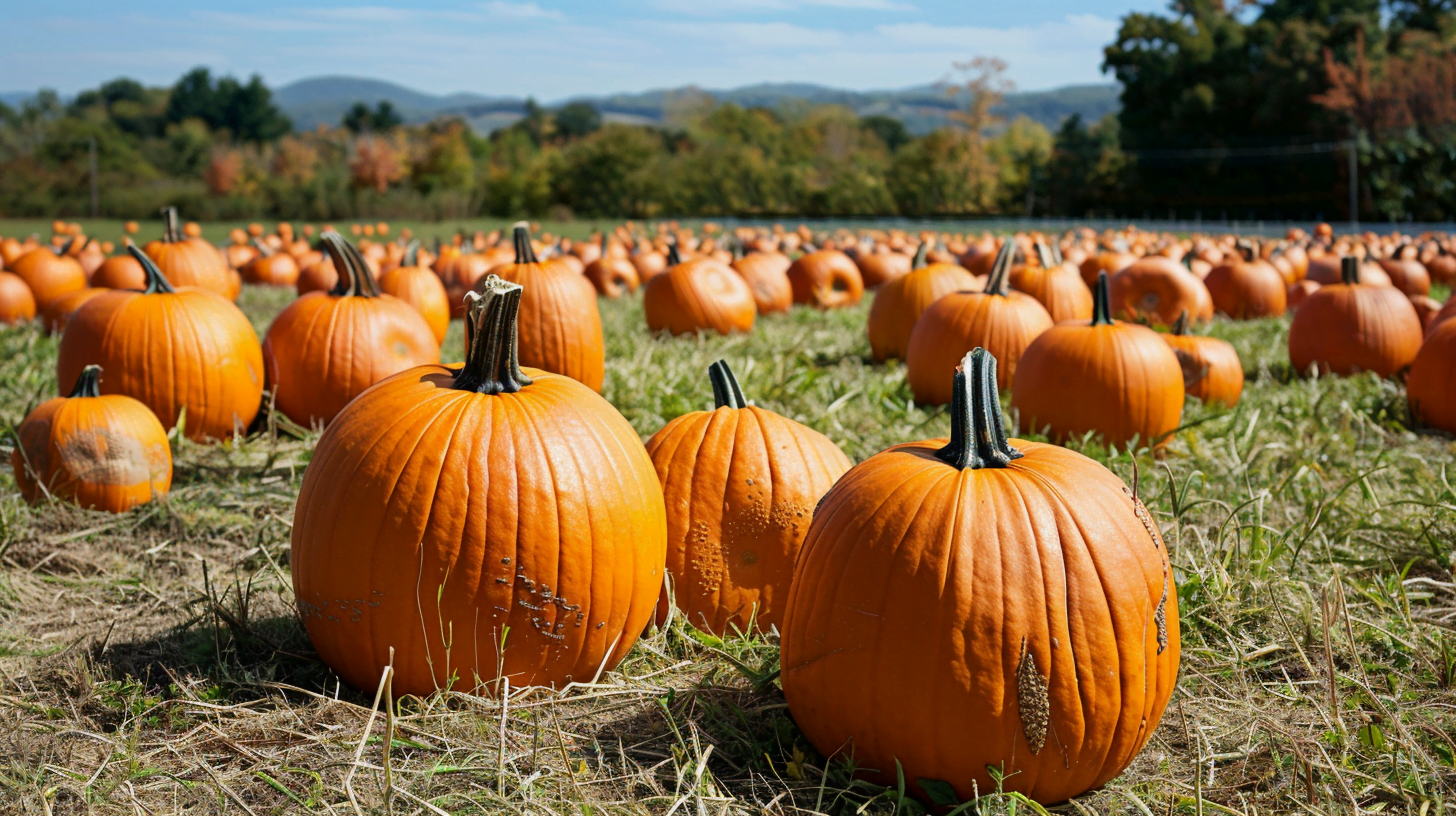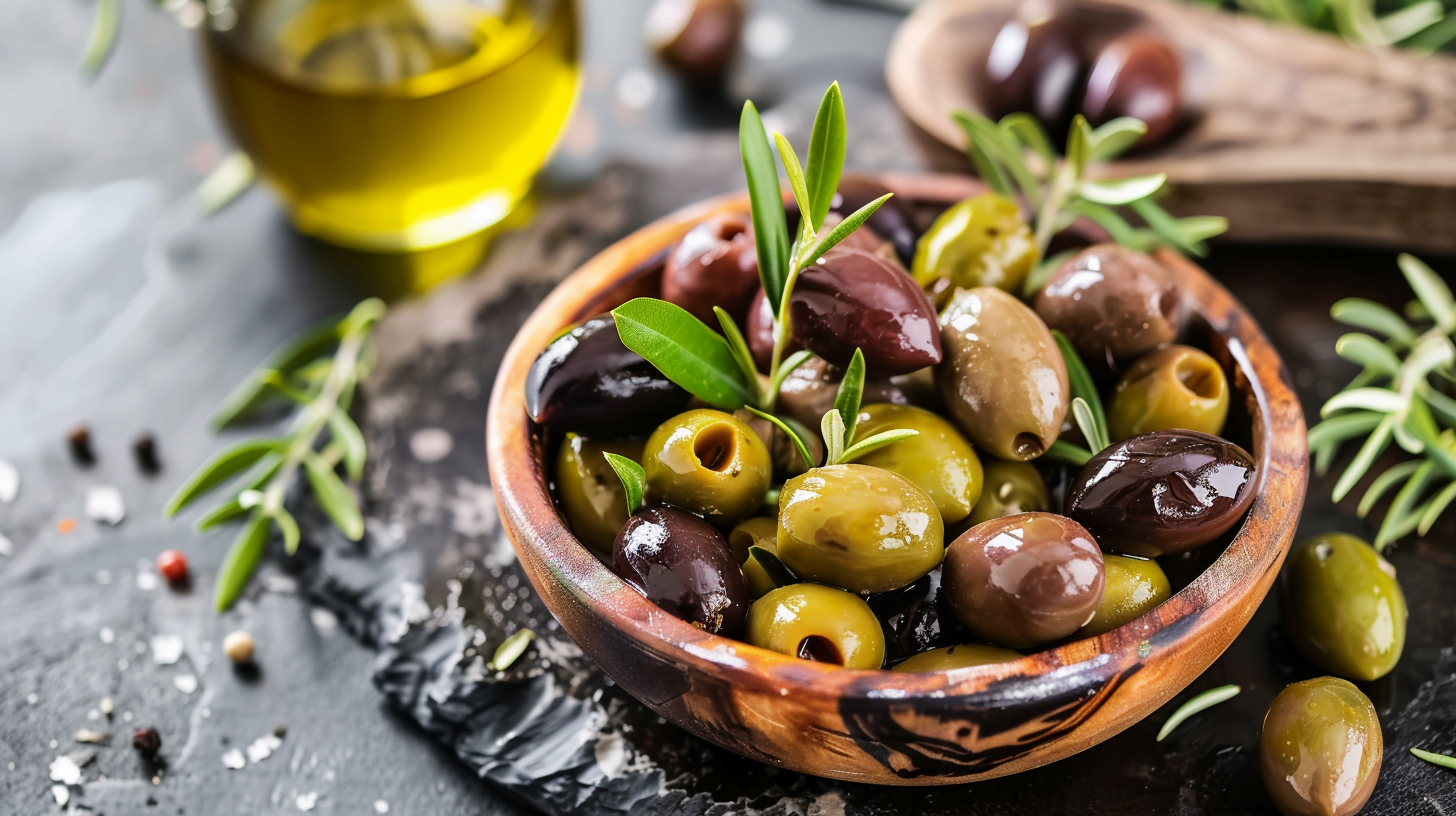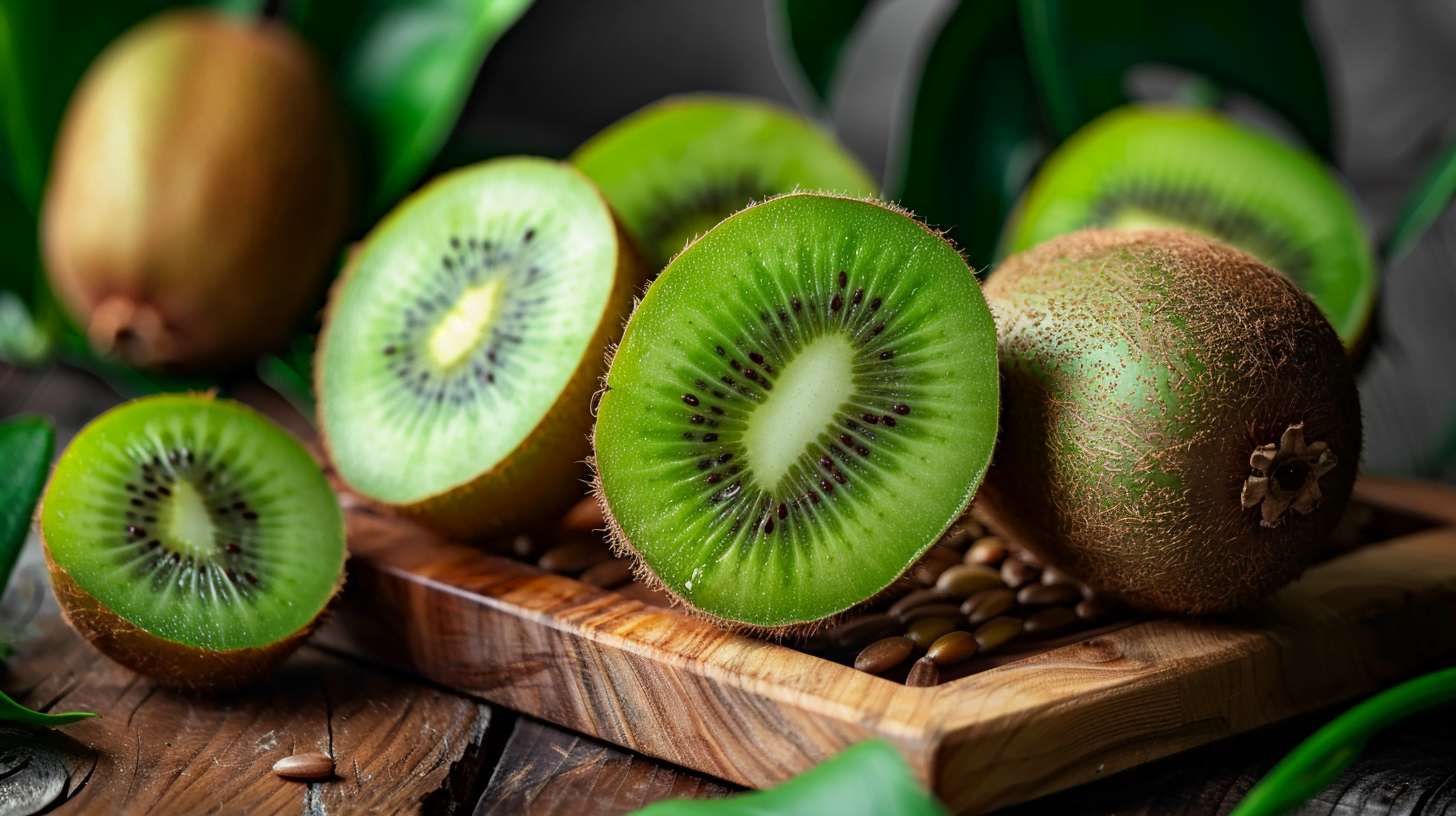Introduction
Apples have become one of the most widely consumed and iconic fruits around the world. With a history stretching back thousands of years and native to central Asia, apples have now become a global commodity and dietary staple. There are over 7,500 known cultivars of apples that come in a broad array of colors, sizes, textures, and flavors. The crunchy sweetness and versatility of the apple has led it to become a ubiquitous ingredient in countless desserts, baked goods, jellies, juices, cider, vinegar and more across many cultures.
But with global production and consumption levels continuing to rise year after year, which countries are currently leading the way in apple cultivation? And what are some of the factors and methods that allow certain nations to excel in the large-scale production of apples? This article as the title “Which Country Produces the Most Apples?” might suggest, will explore the top apple-producing countries worldwide and delve into the key specifics around apple crops, orchards, cultivation methods, and consumption patterns globally.
Top Apple Producing Countries
China
China has emerged as the dominant global leader in apple production. According to 2020 data from the Food and Agriculture Organization (FAO), China accounted for over 40% of total world production of apples, a remarkable market share. In actual volume terms, China grew approximately 44.4 million metric tons of apples in 2020. This dwarfs the production levels of other major producers like the United States, Turkey, and Poland.
The main apple-growing provinces in China are Shandong, Henan, Hebei, and Liaoning, all located in the eastern half of the country. The ideal climate, fertile soils, and focus on high-density dwarfing rootstocks has enabled China’s unmatched yields. The average orchard density can range anywhere from 1,000-4,000 trees per acre. Integrated pest management rather than overuse of pesticides and fungicides has also boosted productivity. Additionally, improved logistics infrastructure and cold storage facilities have allowed China to significantly expand its apple exports in recent years. The country now supplies about 15% of global apple exports, trailing only Poland in export market share.
Key factors in China’s apple production dominance:
- Ideal climate and soil conditions in main growing provinces
- High-density orchard planting from dwarfing rootstocks
- Focus on high-yield varieties like Fuji, Gala, and Red Delicious
- Integrated pest management avoiding overuse of chemicals
- Investment in cold chain logistics and CA storage technology
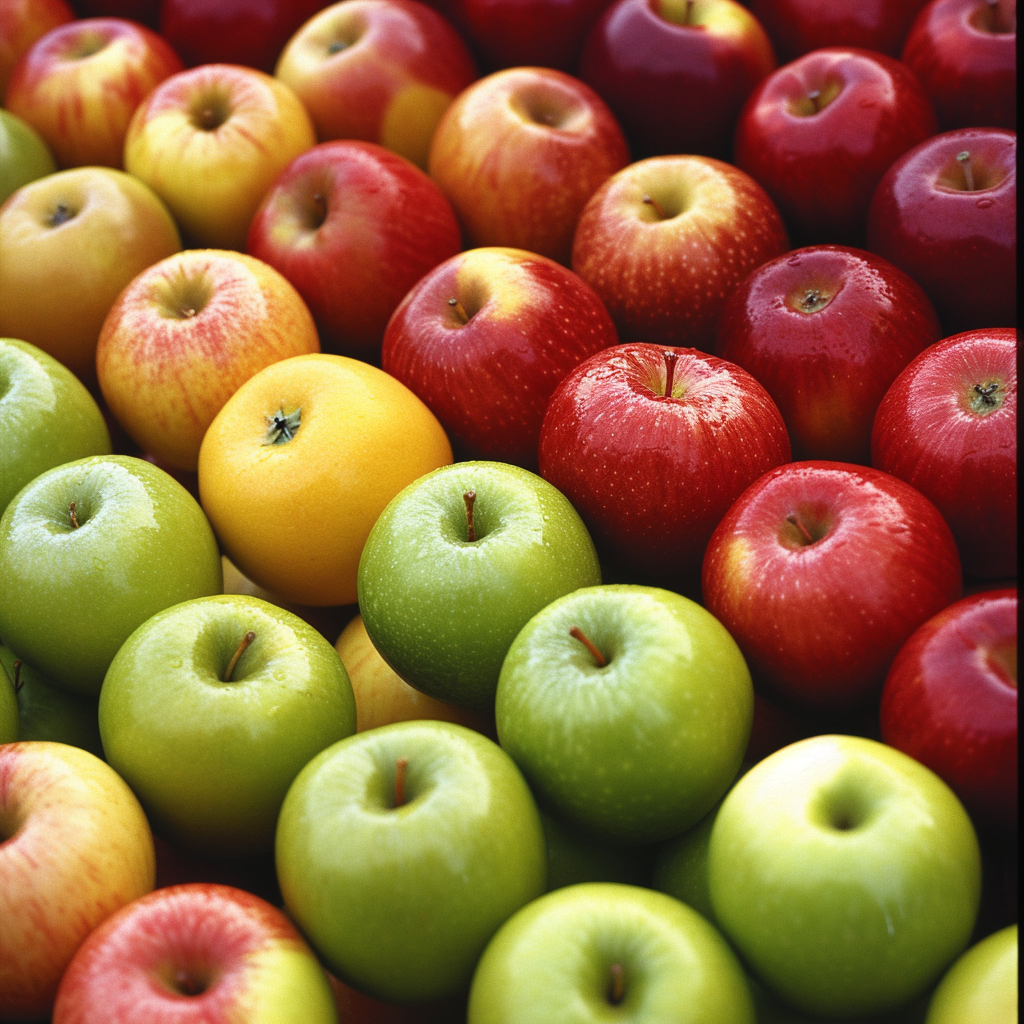
United States
The United States is firmly in second place when it comes to global apple production. According to the USDA, the United States grew over 4.9 million metric tons of apples in 2020. The leading apple-producing states are Washington, New York, Michigan, Pennsylvania, and California. Cool winter chill hours combined with warm summer sun enable excellent quality apples with high sugar content. Popular apple varieties include Red Delicious, Gala, Fuji, Granny Smith, and many more. State-of-the-art cold storage facilities provide the ability to supply U.S. apples year-round across domestic and export markets.
While total U.S. production has trended down slightly in recent decades, high productivity in the top apple states continues. For example, Washington state alone accounted for 66% of total U.S. apple production in 2020. The optimal climate in Washington’s Columbia River Valley allows consistent harvests of premium quality apples. Advanced irrigation systems and orchard management has boosted yields in sunny, dry growing regions like California as well. U.S. apple exports have also grown significantly, rising over 50% in the past decade. Top markets include Mexico, India, Canada and Southeast Asia.
Advantages for apple production in the United States:
- Well-established orchards in excellent growing climates
- State-of-the-art storage, packing and distribution infrastructure
- Capacity to supply apples year-round to domestic and export markets
- Continued breeding research on new proprietary varieties
Turkey
Turkey has also become a global leader when it comes to apple production. According to FAO, Turkey grew over 4 million metric tons of apples in 2020, the third largest worldwide total. While Turkey is best known for fruits like figs, apricots, and pomegranates, apple farming represents a major share of overall fruit production. The Aegean and Black Sea regions in Turkey harbor the highest concentration of apple orchards given optimal precipitation and drainage. Ankara and Isparta provinces are the primary production hubs. On the global stage, Turkey has emerged as a major apple exporter, sending about 50% of domestic crops to importers in Russia and the EU. Advanced cold storages and strategic geography give Turkey a marketplace advantage.
Turkey’s rise in apple production driven by:
- Mass expansion of orchard acreage using high-density systems
- Government investment in modern apple storage and processing facilities
- Ideal climate conditions in Aegean and Black Sea growing areas
- Export-focused production to fulfill Russian and EU demand
Poland
Poland has also become an unexpected major player in global apple production. According to FAO, Poland grew over 3.5 million metric tons of apples in 2020, rivaling leading producers like Turkey and the United States. While Poland does not benefit from an especially favorable climate, intensive cultivation and an abundance of agricultural labor has enabled large harvests. Government subsidies and investment in agriculture have also aided Poland’s apple boom. Poland has likewise capitalized on its geography to become the world’s 4th largest apple exporter, trailing only China. Other pear and berry crops also represent major Polish agriculture exports.
Interesting factors about Poland’s apple industry:
- Mass proliferation of small, family-run apple orchards
- Accounts for about 10% of global organic apple production
- Main growing regions are Masovia and Silesia provinces
- Major exporter to Germany, Russia, Belarus and Scandinavia
- Government financial incentives spur production growth
India
Looking beyond the current top producers, India stands out as a country experiencing rapid growth in apple cultivation. While India grew under 3 million metric tons in 2020, expansion is racing ahead to meet growing domestic demand. The majority of India’s apple orchards are located in the northern hill states like Himachal Pradesh and Uttarakhand, where elevations and climate are most suitable. Improved high-density varieties and orchard management methods have caused yields to climb substantially in recent years. Local Indian varietals such as Red Delicious, Golden Delicious and Gala are also rising in popularity. India’s continuing economic development and burgeoning middle class will provide an excellent long-term outlet for higher domestic apple production.
India’s outlook for apple expansion:
- Apple farming rising in northern hillside states
- Focus on high-density orchards and new variety cultivation
- Majority of output absorbed by surging domestic demand
- Support for advanced cold storage and packing facilities
- Expected to emerge as a top-5 global apple producer
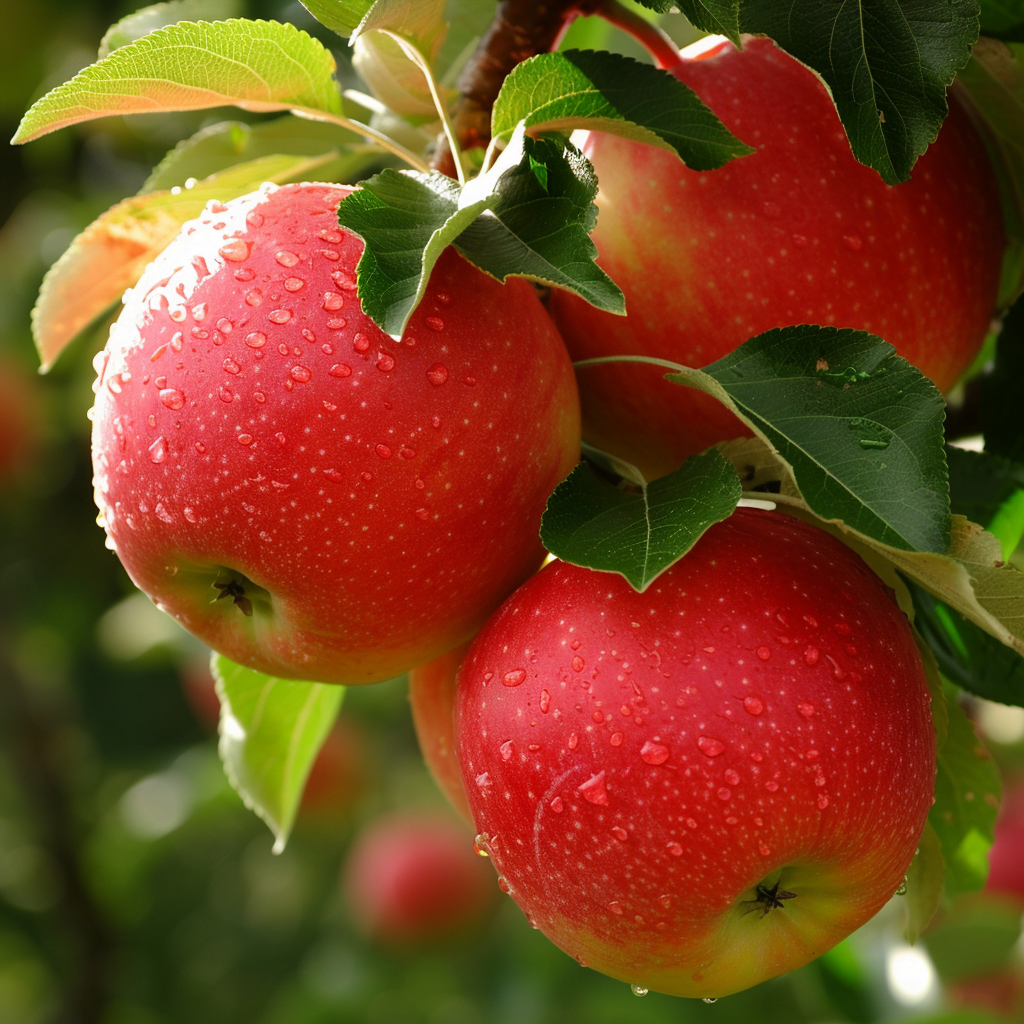
Apple Production Methods
Many factors come into play when cultivating apples on a large commercial scale. While specific techniques and technologies may vary by region and country, some essential elements for maximizing apple yields are:
Climate
- Apples require adequate winter chill hours between 32-45° F to flower and fruit properly. Most varieties need 1000-1500 chill hours.
- Warm sunny growing seasons with average temperatures of 65-70° F are optimal. Late spring frosts can damage flowers and reduce yields.
- Moderate humidity around 60-70% is preferred. Rainfall should average 25-30 inches annually and be evenly distributed.
- Ideal apple climates are continental and temperate. Excess heat causes inferior quality.
Soils
- Deep, well-drained sandy or loamy soils with good water holding capacity work best.
- Soil pH between 6.0-7.0 provides the right acidity balance for nutrient availability.
- Consistent moisture and good soil organic matter encourages large, colorful fruit.
Orchard Designs
- High-density dwarf orchards predominate in Asia, with spacing as close as 1 x 2 meters between trees. More spacing used in Europe and Americas.
- Typical full-sized apple trees reach 15-20 feet. Dwarfing rootstocks limit height for easier harvesting.
- Trellising systems on T or V shapes allow higher density planting and light interception.
- Computer modeling aids configuration for ideal orchard density, light conditions, and airflow.
Pest Management
- Integrated pest management (IPM) combines biological controls along with minimal but targeted pesticide use.
- Organic orchards exclusively utilize natural predators, pheromones, organic sprays, and enhanced biodiversity.
- Common apple pests: coddling moth, aphids, fruit flies, leaf rollers, apple maggot, mites.
- Diseases like apple scab, powdery mildew, fire blight, and rust can reduce yields if uncontrolled.
Pollination
- Apples are self-incompatible and require cross-pollination between different varieties.
- Bees play an essential role in pollination. About 2 honeybee hives per acre are ideal. Orchards may bring in thousands of commercial hives during flowering.
- Other specialized orchard bees like Osmia, Andrena, Nomia, and Megachile can supplement honeybees.
Harvesting
- Apples are hand-picked into baskets or directly into bins in large operations. Manual picking enables selection of only undamaged, ripe fruit.
- Use of ladders, mobile platforms, catch frames and aerial harnesses aids pickers in safely reaching upper branches.
- Ideal harvest times depend on variety, with ripeness gauged by starch content, brix (sugar) levels, firmness, color change.
- Multiple pickings are done over 2-4 weeks as different apples within orchard reach optimal maturity.
- Careful handling to avoid bruising is essential during harvesting, storage and transport.
Storage
- Sophisticated controlled atmosphere (CA) storage enables year-round supply to consumers.
- CA rooms can be adjusted for precise temperature, humidity and air composition. Stored at 32-40° F in 1-3% oxygen and 1-5% carbon dioxide.
- Ultra low oxygen levels slow ripening and respiration rates to prolong shelf life for 10-12 months.
- Wax coatings, fungicides and sanitation measures further protect from shriveling and rotting.
- Refrigerated trucks and railcars maintain cold chain from farm to market.
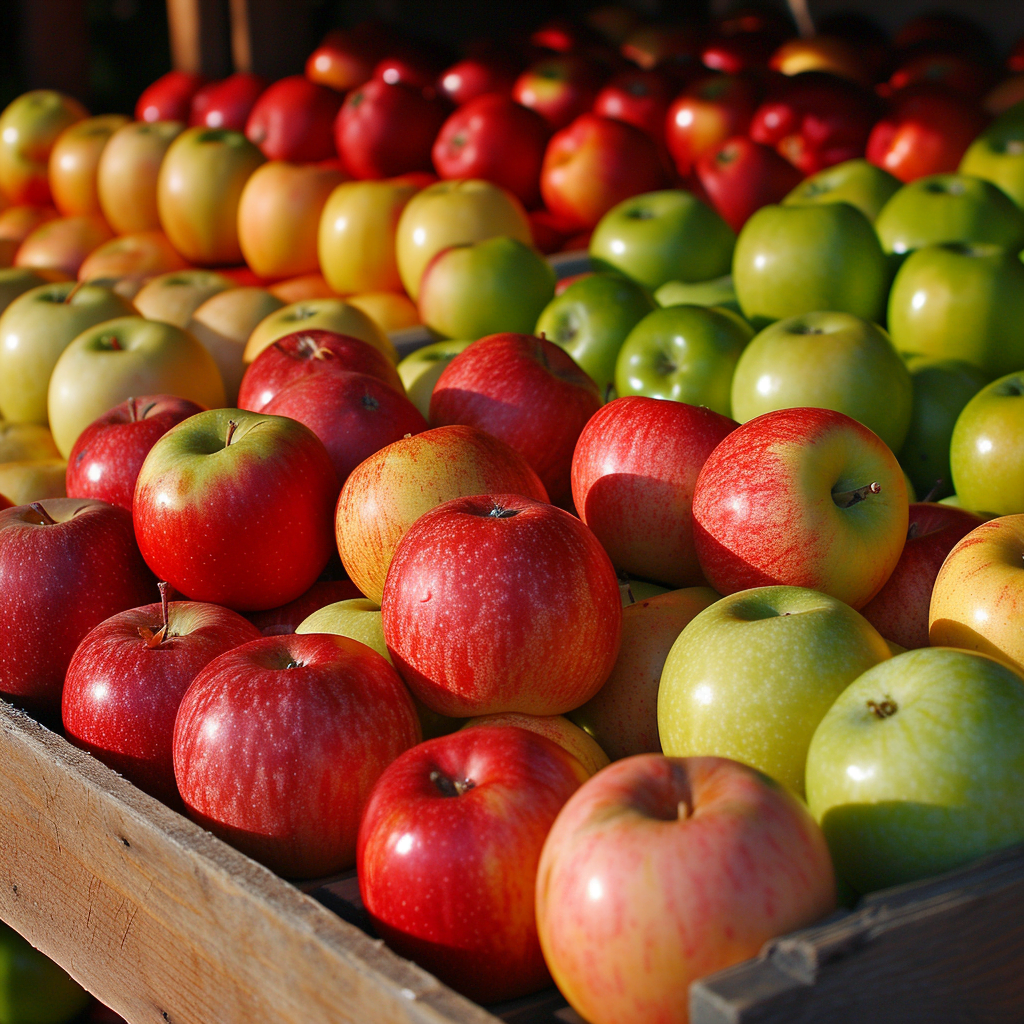
Uses and Consumption of Apples
Beyond fresh eating, apples lend their sweet-tart flavor, juice, and texture to an incredible array of foods and beverages:
Baked Goods
Apples enhance all types of baked goods including pies, tarts, crisps, crumbles, cakes, muffins, breads, pancakes, crepes, custards, cobblers and more. Varieties like Granny Smith, Honeycrisp, and Braeburn hold their shape well during baking.
Juices and Cider
Unpasteurized apple cider and purified, filtered apple juice are globally popular drinks. Fermented hard cider has seen a resurgence. Blending apple juice with other fruit juices is also common practice.
Preserves and Spreads
Apples are made into jams, butter, chutney, ketchup, vinegar, and fruit leathers or bars. Drying apples concentrates their flavor and sweetness.
Alcoholic Beverages
Besides cider, apples get distilled into brandy, calvados, applejack, and other fruit liqueurs. The acidity balances well with spirits.
Other Uses
Apples also frequently flavor desserts like ice cream, yogurt, applesauce, shaved ice. They can add sweetness and moisture to savory dishes too. Even cosmetics like soaps and lotions leverage apple’s fragrance.
Health Benefits
Apples provide an array of potential health benefits:
- Excellent source of fiber, especially pectin. One medium apple has 4 grams of fiber. The skin contains much of the fiber.
- Loaded with vitamin C. One apple provides 14% of daily vitamin C needs. Vitamin C boosts immunity and acts as an antioxidant.
- High polyphenol levels. These compounds have antioxidant and anti-inflammatory effects.
- Quercetin is a flavonoid in apples shown to improve heart health, blood pressure, and diabetes management in studies.
- Diets high in fruits like apples correlate to lower risk of cancer, stroke, heart disease and diabetes. Fiber content is a major factor.
Global Consumption Trends
- Per capita apple consumption is highest in Europe, led by countries like Ireland, Poland, Italy, and France where fresh apples and cider are integral to culinary traditions.
- China is also a high consumption country, averaging around 15 kg per person annually. Other Asian nations trail in consumption but growth is rising fast.
- Americans eat the most apples of any country in total tonnage, but per capita intake around 10kg is modest compared to Europe.
- Global apple consumption has trended up over 50% in the past three decades. China and emerging Asian markets are driving growth.
| Country | Per Capita Consumption (kg/year) |
|---|---|
| Ireland | 20 |
| Poland | 18 |
| China | 15 |
| Turkey | 14 |
| Italy | 14 |
The Future of Apples
Looking ahead, the world’s demand for apples shows no signs of slowing. Markets in Asia, Africa, and South America present huge opportunities for the apple industry. With increased trade and logistics infrastructure, leading producers like China, Poland, Turkey, and the United States will be able to ship apples efficiently to new consumers worldwide.
Advances in apple breeding and genetics will also bring forth improved disease resistance, yields, flavors, and sustainability. Crisp Cosmic Crisps and sweet-tart SweeTangos showcase new managed variety releases. Genome sequencing continues to identify desired traits to accelerate targeted breeding programs.
Production practices will also innovate, as the industry focuses on environmental stewardship and responding to climate change. Water management, carbon sequestration techniques, biodegradable orchard plastics, and reduced pesticide dependence will be priorities.
The irresistible crunch and versatility of the apple ensures sustained demand in both mature and emerging markets globally. With innovative production models and a spirit of collaboration across apple-growing nations, the fruits of this orchard labor will continue benefiting consumers worldwide.
Conclusion
While China has clearly emerged as the dominant apple producer with over 40% global market share, major contributors like the United States, Turkey, Poland and others will continue playing vital roles in meeting worldwide demand. Rising consumption in developing economies coupled with advances in apple breeding, cultivation methods, and global trade pave a bright future for apple lovers everywhere. The “apple a day” adage stems from its incredible nutritional qualities and will surely be recommended for generations to come.

